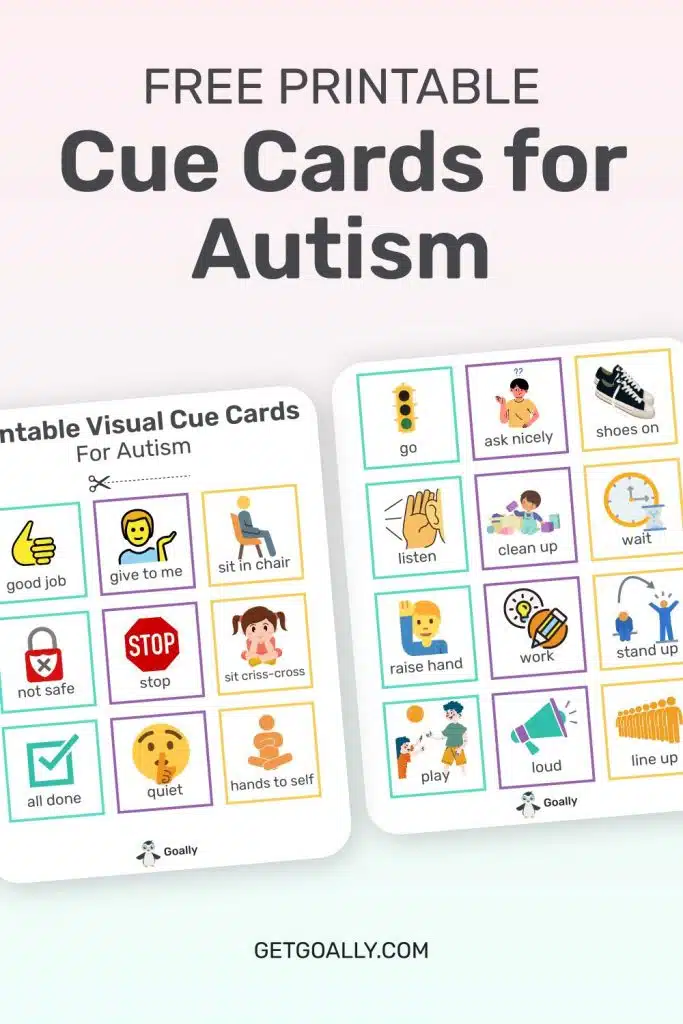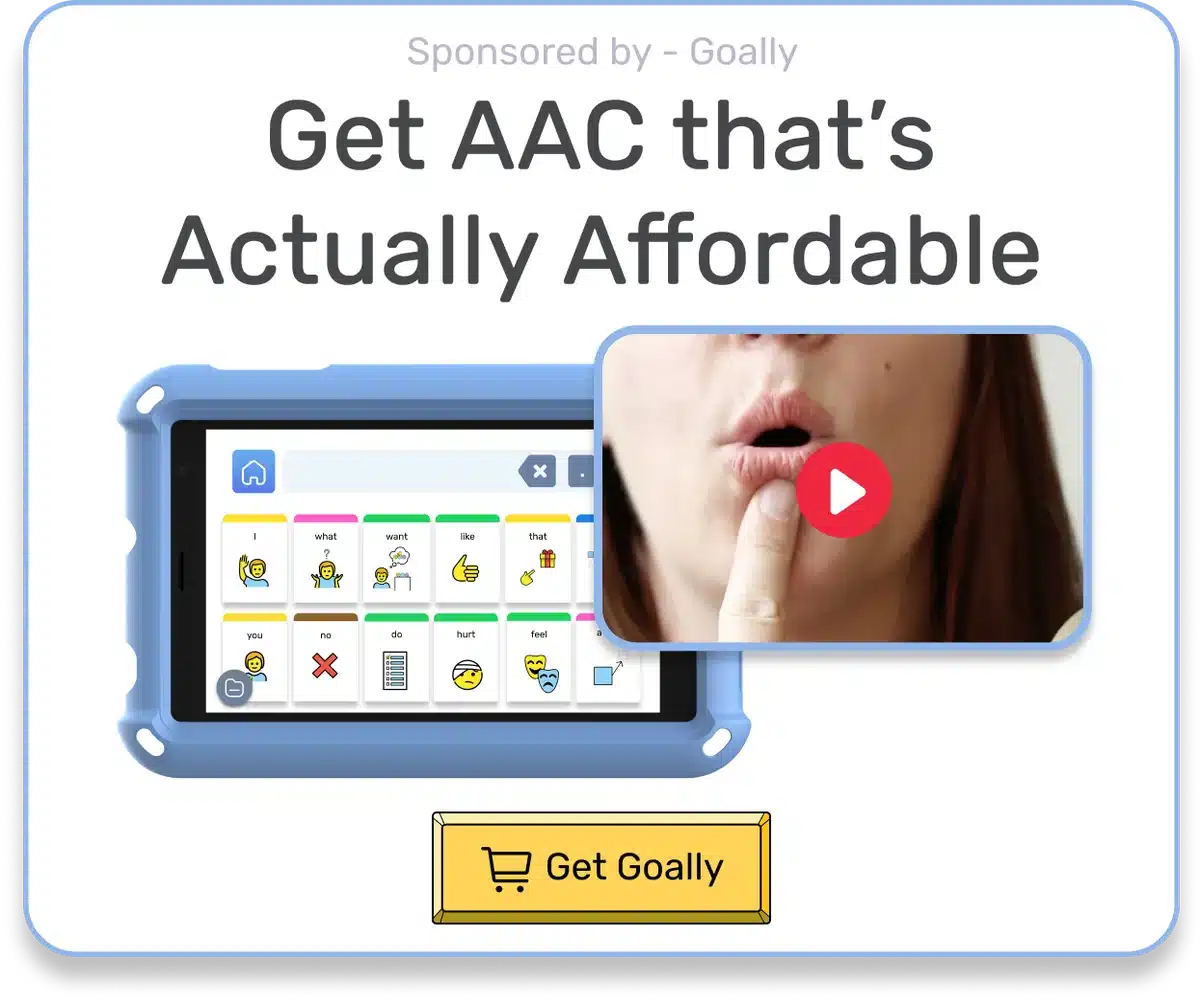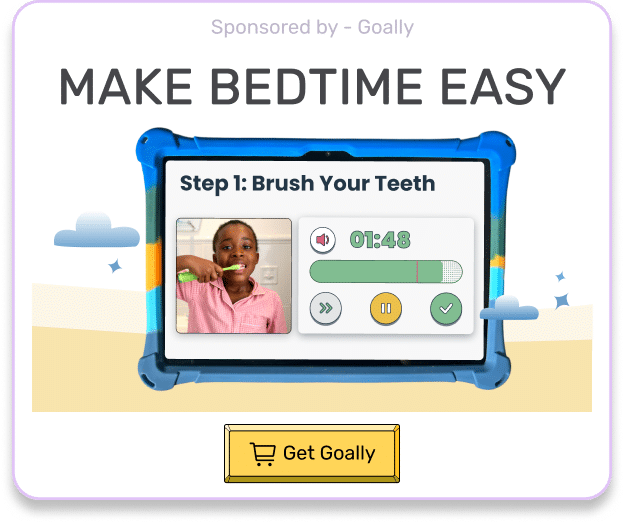Did you know that 1 in 44 children in the United States has an autism spectrum disorder? If you’re a parent to one of these children, you might be trying to find effective forms of communication. Recently, researchers have found success with visual cue cards. To learn more about these memory-helping tools, keep reading, we’ll tell you the importance of this tactic and ways to make this method more effective. At the end of this article, we’ll give you free printable visual cue cards for autism that you can try today!
Table of Contents
The Importance of Visual Cue Cards for Autism
Did you know that there’s a non-verbal way for children with autism spectrum disorders (ASD) to communicate what they need and want? Visual cue cards are where it’s at! These picture cue cards for autism can really help kiddos with ASD make sense of the world around them. Plus, as we know, children with ASD benefit from consistent schedules and routines, and social cue cards for autism can help keep things on track.
But these visual cue cards don’t just represent modeling – they actually physically show a child what you want them to do. They model an action, activate the child’s working memory, and encourage their next move. As parents use these cue cards, they’re helping their children communicate in ways that come more naturally to them. And that, in turn, can reduce frustration and help develop a therapeutic relationship.
As parents use these visual cue cards, they’re helping children with ASD communicate in ways they naturally prefer. This can reduce their frustration and help you develop a therapeutic relationship. Many parents who have children with autism find themselves feeling frustrated about how their children process language. They may have to repeat the same information over and over again. Cue cards can help minimize verbal repetition.
Read More: Autism Communication Cards | Free Printable
Using Goally for Digital Visual Cue Cards and Routines
With the free printable visual cue cards from Goally, you and your child will be on your way to better communication. Once you see how great social cue cards for autism are, you may be ready to go digital with Goally. We offer digital cue cards for autism in a range of routines and habits:
- Bedtime routines
- Executive functioning exercises
- Co-parenting assistance
- Morning routines
- Chore charts

Goally’s skill building tablet breaks down large tasks into small, achievable steps. It helps kids complete their tasks independently! Create custom routines with your own videos & pictures for every step. The steps come in small, bite-sized pieces to help your child learn the little fundamentals (like putting the toothpaste on their toothbrush!) to achieve bigger goals. And that’s just the beginning. Watch a tour of our apps below to learn how Goally can set your child up for success!
Scientists and moms have researched Goally, and they find that it produces amazing results time and time again. Our autism learning tools have proven that they have a space in any neurodiverse home. Here are just a few of the statistics that we picked up from a university study of parents using Goally with their children:
- 69% of parents reported fewer meltdowns from their children
- 86% of parents reported fewer arguments with their children
- 88% of parents reported less stress overall
Use Rewards to Motivate When Using Visual Cue Cards
After obtaining your free printable visual cue cards for autism, consider complementing them with an incentive program to inspire your child. Children on the autism spectrum may be hesitant about novel experiences and schedule alterations, but a reward system could alleviate their apprehension. Concentrating on the anticipated outcome aids your child in recognizing the benefits of embracing new experiences.

Read more: ADHD and Social Cues in Kids
Here’s why it works: when a child earns a reward they’ve been working towards, their brain releases dopamine – often known as the “happy neurotransmitter.” This boost in dopamine increases the likelihood of your child continuing to complete tasks in search of more rewards. Recent autism research suggests that neurodiverse children might have dysfunctions in the dopaminergic centers of their brains. So, giving them that dopamine hit from completing tasks could potentially help improve this area’s function, even though the change might be temporary. Overall, a reward system can provide a helpful and encouraging boost to kids with autism!
Creating a Reward System for Children With Autism
| Reward Ideas | For Younger Kids | For Older Kids |
|---|---|---|
| Earning a penny for each task | ✔️ | |
| Earning 10 minutes of computer time | ✔️ | ✔️ |
| Earning playtime with a favorite toy | ✔️ | |
| Earning stickers on a chore chart | ✔️ | ✔️ |
| Earning outside playtime | ✔️ | ✔️ |
When choosing rewards for your child to pair with free printable visual cue cards for autism, consider their age and interests. A 5-year-old child with autism may have different goals than a 15-year-old child with autism. Keep in mind that rewards don’t have to be complicated – what’s important is that they motivate and engage your child.
If you’re unsure of what to reward your child with, you should take a look at their current coping mechanisms. Do they run to their toys or spend time on their computer? Do they want to play outside or choose their own stickers to put into a notebook? Their coping mechanisms and daily routines can help you build an effective reward system. As your child grows, you may need to alter the rewards and their associated tasks.
Download Your Free Printable Visual Cue Cards
Don’t forget to download our free printable visual cue cards for autism. Not only will these cards help aid in communication with your kiddo, but they’ll also give you an idea of what Goally offers in digital format!
Goally | Visual Schedules To Structure Your Kiddo’s Routine
Ready to upgrade from visual cue cards to digital visual schedules? Goally’s tablet for kids uses routines that break down large tasks into small, achievable steps through visuals and audio support. It helps kids complete their tasks independently!
Create custom routines with your own videos & pictures for every step of their day. By combining visual cues with small, bite-sized steps, you help your child learn and master life skills. And that’s just the beginning. Watch a tour of our apps below to learn how Goally can set your child up for success!
Once you’re ready to go digital with your cue cards, get Goally! With Goally, you can add as many visual cues as you want. And, you can order them as a schedule, checklist, or reminder tool. Goally allows parents to use pictures and videos to help children remember their expectations. Get started with Goally by visiting our website. We can’t wait to see how Goally changes your life.
FAQ’s About Visual Cue Cards for Autism
What are free printable visual cue cards for autism? These are downloadable, visual aids designed to help children with autism understand and navigate daily tasks or activities. How can visual cue cards benefit autistic children? Visual cue cards can help reduce anxiety and improve understanding by providing clear, visual instructions for tasks or routines. Can printable visual cue cards be used in conjunction with a reward system? Yes, pairing visual cue cards with a reward system can motivate children and provide positive reinforcement for desired behaviors. Can these cue cards help in managing changes in routine? Yes, visual cue cards can help autistic children to adapt to changes by providing structured, visual schedules. How does using visual cue cards encourage kids to try new things? By focusing on desired outcomes, visual cue cards can help children see the positive side of new experiences.
This post was originally published on 03/10/2023. It was updated on 12/20/2023.

Goally
We help parents teach their kids life skills, like doing bedtime and morning independently. Backed by science, we incorporate evidence-based practices and expert-informed designs in all of our apps and content.








